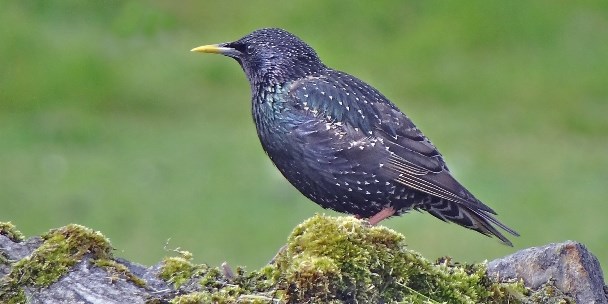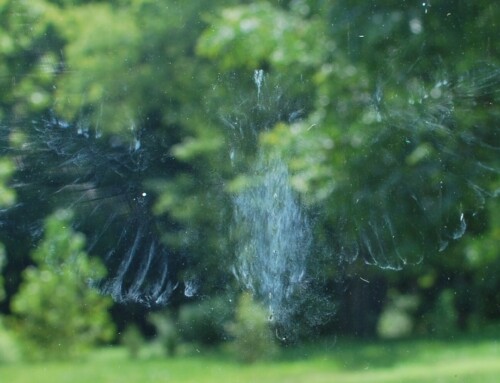A 46-year starling study in New Zealand is used to illustrate social and cultural evolution in laymans’ language
LINKED PAPER
The fertility clinic: a bird’s-eye view of our future. Flux, J. E. C., & Flux, M. 2015. New Zealand Journal of Zoology. DOI: 10.1080/03014223.2015.1099549 VIEW
The New Zealand Royal Society has teamed up with Victoria University of Wellington’s Bill Manhire School of Creative Writing to offer an annual prize. The aim of the competition is to encourage scientists to learn how to explain a complex topic in simple terms, while creative writers tackle the same topic in fiction to gain an understanding of science.

In 2008 (to commemorate the 200th anniversary of Darwin’s birth in 1809) the topic was “Evolution”. The guideline read: ‘The Universe makes rather an indifferent parent, I’m afraid’, said Dickens’ kindly Mr Jarndyce in Bleak House (Dickens 1865, p. 75). Humans have evolved to understand and intervene in the unsentimental processes of nature —with some unfortunate and unintended consequences. Back to nature or on to the future?
Having worked for 10 years on population dynamics of Starlings Sturnus vulgaris in a colony of 500 nest-boxes (Flux & Flux 1981) as part of a study of artificial selection for high clutch size (Flux & Flux 1982), we decided to enter an essay. It was shortlisted in the top ten, and lay on the website unread; or at least unquoted.

The editor of the NZ Journal of Zoology admired the style, and suggested it should be printed as a Forum review paper (King 2015). We agreed, and were glad to have the chance to include more recent work on DDT residues (Eems et al. 2013), climate change (Flux, Bull, Dzuniac & Tryjanowski 2009), and laying synchrony in relation to nest spacing (Evans, Ardia & Flux 2009).
As mammalogists specialising on lagomorphs (Chapman & Flux 1990) rather than ornithologists, we have a somewhat unusual viewpoint, and can cross-link into different aspects of population control in vertebrates to explain why some species, including humans, have become pests (Flux 2001).

We hope you enjoy the paper; there are no statistics, figures or tables. Our aim, in the words of Colinvaux (1973), has been to demonstrate “the great fun that ecologists find in their own peculiar way of looking at nature…to capture enough of ecology’s enjoyment to give a little pleasure in the reading.”
References
Chapman, J. A. & Flux, J. E. C. 1990. Rabbits, hares and pikas. Status survey and conservation plan. IUCN, Gland, Switzerland. 168 pp.
Colinvaux, P. A. 1973. Introduction to Ecology. Wiley, New York, N.Y. 621 pp.
Eems, M., Jaspers, V. L. B., Van den Steen, E., Bateson, M., Carere, C., Clergeau, P., Constantini, D., Dolenec, Z., Elliott, J. E., Flux, J., Gwinner, H., Halbrook, R. S., Heeb, P., Mazgajski, T. D., Moksnes, A., Polo, V., Soler, J. J., Sinclair, R., Veiga, J. P., Williams, T. D., Covaci, A. & Pinxten, R. 2013. Can starling eggs be useful as a biomonitoring tool to study organohalogenated contaminants on a worldwide scale? Environment International 51: 141-149. VIEW
Evans, L. E., Ardia, D. R. & Flux, J. E. C. 2009. Breeding synchrony through social stimulation in a spatially segregated population of European starlings. Animal Behaviour 78: 671-675. VIEW
Flux, J.E.C. 2001. Evidence of self-limitation in wild vertebrate populations. Oikos 92: 555-557. VIEW
Flux, J. E. C., Bull, P. C., Zduniak, P. & Tryjanowski, P. 2009. Lack of synchrony between breeding in two neighbouring starling (Sturnus vulgaris L.) populations in New Zealand: evidence of no regional effect of the ENSO? Polish Journal of Ecology 57: 363-369. VIEW
Flux, J.E.C. & Flux, M. M. 1981. Population dynamics and age structure of starlings (Sturnus vulgaris) in New Zealand. New Zealand Journal of Ecology 4: 65-72. VIEW
Flux, J.E.C. & Flux, M. M. 1982. Artificial selection and gene flow in wild starlings, Sturnus vulgaris. Naturwissenschaften 69: 96-97. VIEW
King, C. M. 2015. Introduction to ‘The fertility clinic: a bird’s-eye view of our future’. New Zealand Journal of Zoology 42 : 283. VIEW
Image credit
Featured image: Common Starting, Sturnus vulgaris © J Flux
If you want to write about your research in #theBOUblog, then please see here.





